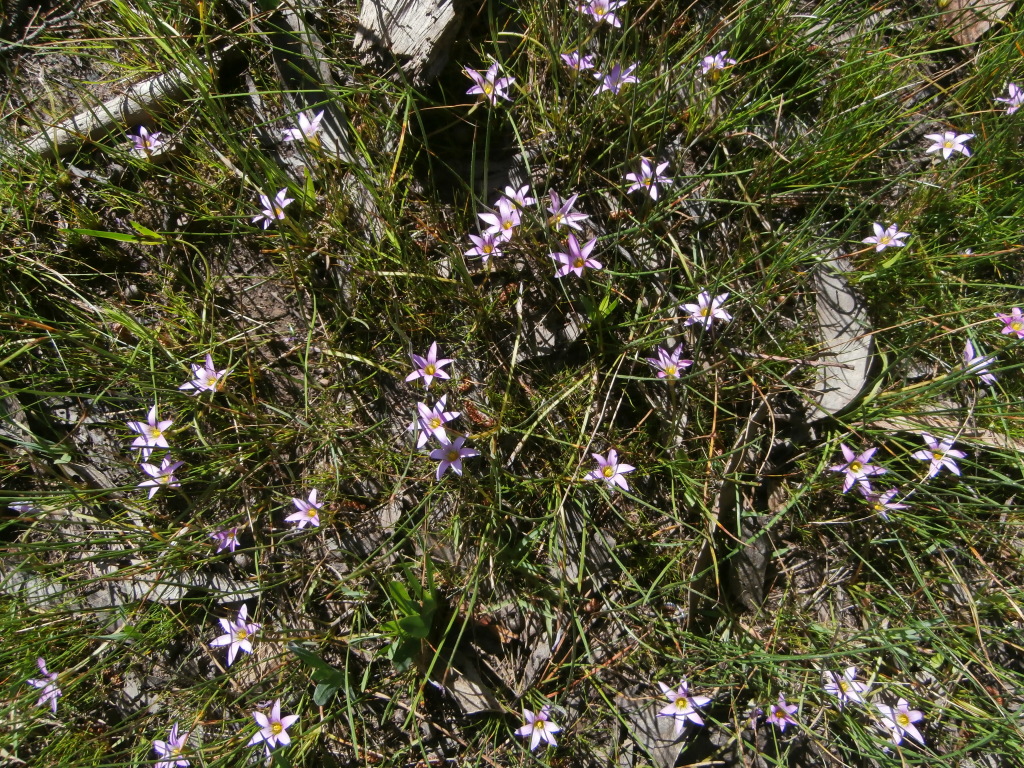Romulea rosea
(L.) Eckl.Corm globose, with outer layers ± smooth except split into numerous tooth-like fibres at base and apex. Stem absent. Leaves several, all basal, 8–45 cm long, 0.5–2.5 mm wide, filiform to compressed cylindrical, grooved, tough, fibrous. Scape 3–12 cm long. Basal 'outer' primary bract 10–25 mm long, herbaceous; distal 'inner' primary bract slightly shorter, herbaceous with a wide dry and membranous margin. Perianth tube 2–8 mm long, yellow or orange; lobes elliptic, 10–38 mm long, pale to bright pink or magenta, rarely white, with apex acute or subacute; inner perianth lobes with dark stripes or greenish on outer surface. Staminal filaments 4–6 mm long, glabrescent; anthers 3–10 mm long. Style 7–18 mm long; stigmas shorter to longer than stamens. Capsule cylindric, c. 1 cm long; infructescence intially decurved, becoming straight at maturity.
LoM, MuM, Wim, GleP, VVP, VRiv, MSB, RobP, MuF, GipP, OtP, WaP, Gold, CVU, GGr, DunT, NIS, EGL, EGU, WPro, HSF, HNF, OtR, Strz, VAlp.
Native to Africa. Two of the five varieties are naturalised in Victoria. A third variety, var. communis M.P.de Vos is naturalised in Western Australia.
Conn, B.J. (1994). Iridaceae. In: Walsh, N.G.; Entwisle, T.J., Flora of Victoria Vol. 2, Ferns and Allied Plants, Conifers and Monocotyledons, pp. 686–716. Inkata Press, Melbourne.
 Spinning
Spinning




